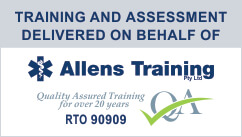First Aid treatment for fainting – Northern Beaches local First Aid provider
Simple Instruction prides itself of having up-to-date and relevant information for our clients when they complete a first aid or CPR course. With the heatwave upon us it is important to remember what to do if someone you know faints and the first aid treatment you need to provide. Simple Instruction keeps it Simple – If conscious Lay down and elevate the legs of the casualty.
Book online to a Provide First Aid HLTAID003, Provide CPR HLTAID001 or Provide emergency first aid response in an education and care setting HLTAID004. Course are conducted at the Dee Why RSL (DYRSL) on the Northern Beaches of Sydney.
Fainting is a brief episode of unconsciousness caused by a sudden drop in blood pressure. The most likely cause of this sudden drop will either be some change in the blood vessels or the heartbeat itself.
Blood vessels continually adjust their width to ensure a constant blood pressure. For instance, the vessels constrict (tighten) when we stand up to counteract the effects of gravity. Temporary low blood pressure can be caused by various events that prompt blood vessels to dilate (expand), including extreme heat, emotional distress or pain. The lack of blood to the brain causes loss of consciousness.
Most fainting will pass quickly and won’t be serious. Usually, a fainting episode will only last a few seconds, although it will make the person feel unwell and recovery may take several minutes. If a person doesn’t recover quickly, always seek urgent medical attention.
Symptoms of fainting
The symptoms of a faint include:
Dizziness
Light-headedness
A pale face
Perspiration
Heightened anxiety and restlessness
Nausea
Collapse
Unconsciousness, for a few seconds
Full recovery after a few minutes.
Occasionally, a collapse may be caused by a more serious event such as a stroke or a disturbance in the normal heart rhythm. A faint might be telling you something is wrong and further examination is sometimes important.
If a person complains of breathlessness, chest pains or heart palpitations, or if the pulse is faster or slower than expected, the person should see a doctor. Similarly, slurred speech, facial droop or weakness in any limbs are signs of a serious problem.
Back to top
Causes of a drop in blood pressure
A temporary drop in blood pressure can be caused by different factors, including:
Prolonged standing
Extreme heat, which pushes blood away from the main circulatory system and into the vessels of the skin
Emotional distress
Severe pain
The sight of blood
The sight of a hypodermic needle
Other events that a person may find distressing.
Back to top
What to do if you feel faint
If possible, lie down and elevate the feet. This may prevent a loss of consciousness. Fresh air can also help, especially if you are feeling hot. If it is not possible to lie down, put your head down as low as possible.
If you do faint, remain lying down for ten minutes. Sit up slowly when you need to get up.
Back to top
First aid and fainting
First aid treatment for a person who has fainted includes:
Help the person lie down. A person who has fainted in a chair should be helped to the ground.
If the person is unconscious, roll them on their side. Check they are breathing and that they have a pulse.
If possible, elevate the person’s feet above the height of their head.
If the fainting episode was brought on by heat, remove or loosen clothes, and try to cool the person down by wiping them with a wet cloth or fanning them.
Assess the person for any potential injuries if they have fallen.
In an emergency, always call triple zero (000) for an ambulance if the person has not regained consciousness within a few seconds or recovered in a few minutes.
Back to top
Hypotension and fainting
Low blood pressure (hypotension) is a condition characterised by blood pressure that is lower than normal or usual for the person.
Hypotension can be caused by a variety of factors including heart disease and abnormal heart rhythms, some infections, dehydration and medications for high blood pressure or certain heart conditions. Low blood pressure can also be caused by a rare disorder of the adrenal glands called Addison’s disease. Frequent fainting spells or sensations of light-headedness need to be medically investigated to check for underlying causes.
Orthostatic hypotension
Blood vessels respond to gravity by constricting (tightening). This increases or maintains blood pressure when we stand up from a sitting or lying position.
Orthostatic hypotension means that the blood vessels don’t adjust to a standing position, but instead allow the blood pressure to drop, which can trigger a fainting episode. For this reason, some people, particularly the elderly or those on blood pressure medication, should stand up from sitting or lying in bed slowly. This helps prevent fainting after sudden changes in position.
Causes of orthostatic hypotension include:
Nervous system diseases, such as neuropathy
Prolonged bed rest
Dehydration
Irregular heartbeat (heart arrhythmia)
Changes in blood pressure medication.
Back to top
Where to get help
Your doctor
In an emergency, always call triple zero (000).
Back to top
Things to remember
Common causes of fainting include heat, pain, distress, the sight of blood, or anxiety and hyperventilating.
Lying the person down will often improve the person’s condition.
Frequent fainting spells need to be medically investigated to check for underlying causes.
